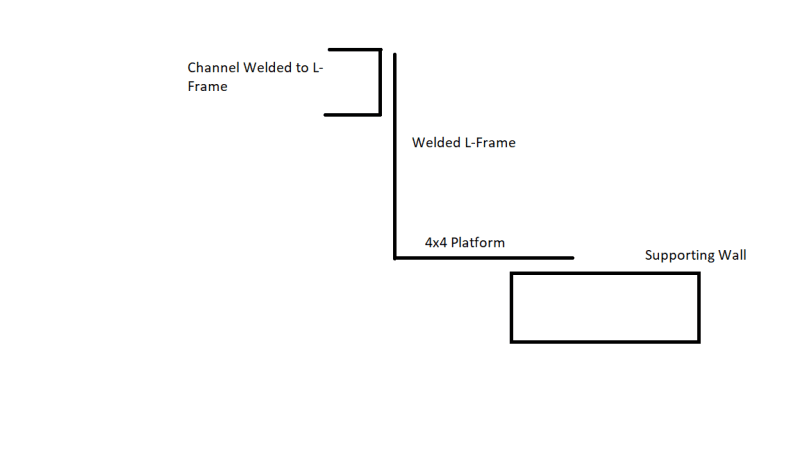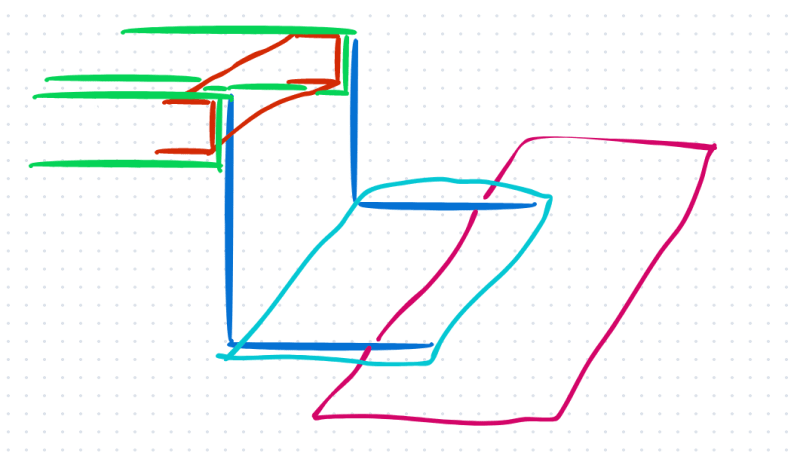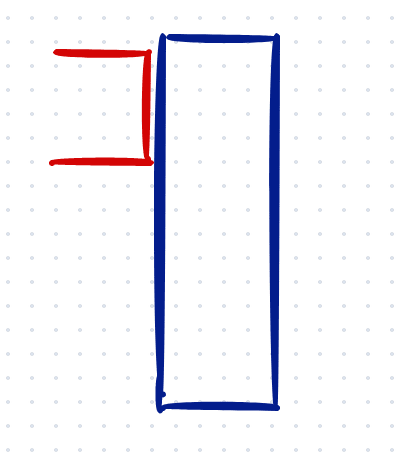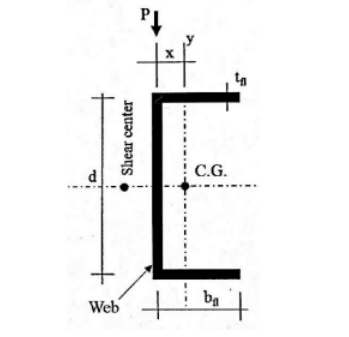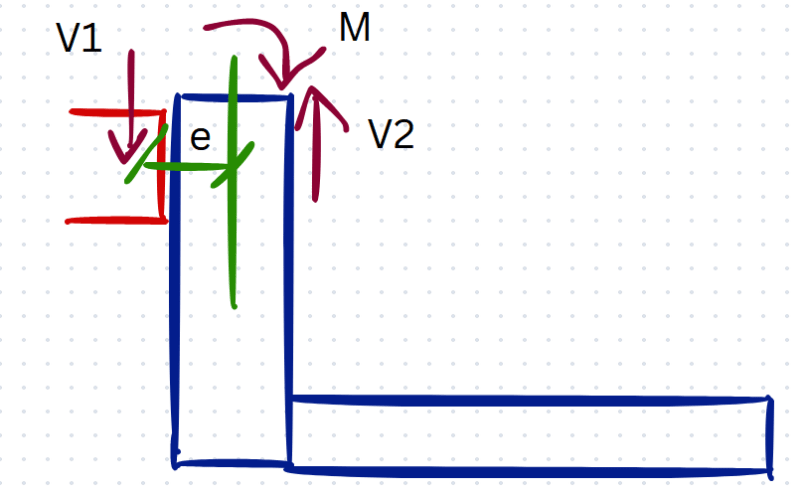I am analyzing the supports for a small access platform (4x4). Maybe two workers on it at the same time with some equipment so max load is say ~ 2 kips.
The platform is supported by a welded L-frame and a wall. There are two of those frames per each platform.
The channel is welded to the frame and the channel spans between two WF beams and is connected to the WF beams with a clip angle.
I'm trying to determine the best way to look at the torsion in the channel.
Worst-case scenario I would just point a point load at the middle of the platform and take the moment at the face of the channel as the torsion demand.
I can resolve the torsion force using the simplified equivalent tee method as per AISC DG9 and check the channel flange for weak axis bending, but I'm wondering what will happen at the connection to the W8 beam.
The clip angle is flexible and will rotate which should result in no torsion transmitted to the W8.
Anything else I should be concerned about regarding the connection or the channel?
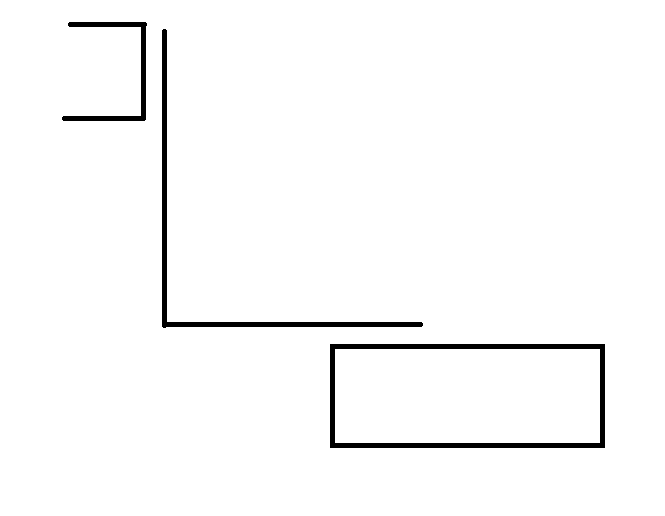
The platform is supported by a welded L-frame and a wall. There are two of those frames per each platform.
The channel is welded to the frame and the channel spans between two WF beams and is connected to the WF beams with a clip angle.
I'm trying to determine the best way to look at the torsion in the channel.
Worst-case scenario I would just point a point load at the middle of the platform and take the moment at the face of the channel as the torsion demand.
I can resolve the torsion force using the simplified equivalent tee method as per AISC DG9 and check the channel flange for weak axis bending, but I'm wondering what will happen at the connection to the W8 beam.
The clip angle is flexible and will rotate which should result in no torsion transmitted to the W8.
Anything else I should be concerned about regarding the connection or the channel?


